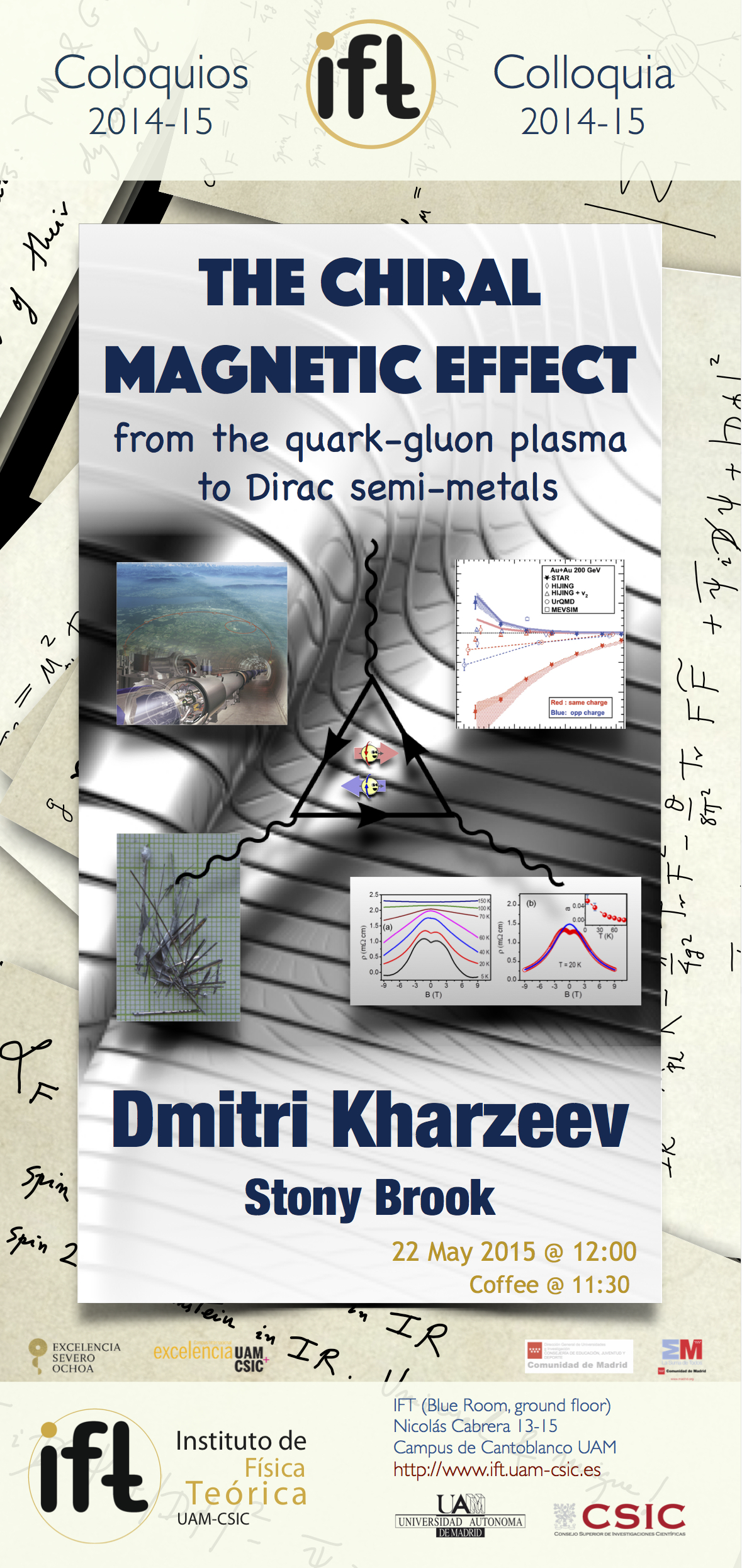Centro de Excelencia Severo Ochoa
Menu
Search

Blue room
Chirality ("handedness") is an ubiquitous concept in modern science, from particle physics to biology. Recently it has been realized that chirality has dramatic implications for the macroscopic behavior of systems with chiral particles.
In particular, the imbalance between the densities of left- and right-handed fermions in the presence of magnetic field induces the non-dissipative transport of electric charge ("the Chiral Magnetic Effect", CME) analogous to superconductivity. In quark-gluon plasma, this leads to the charge asymmetry studied in the experiments at Relativistic Heavy Ion Collider and the Large Hadron Collider.
Chirality defines the unique properties of recently discovered Dirac semimetals. I will report the observation of CME in a Dirac semimetal ZrTe5, and discuss the future studies of this effect in condensed matter and nuclear physics.
Social media